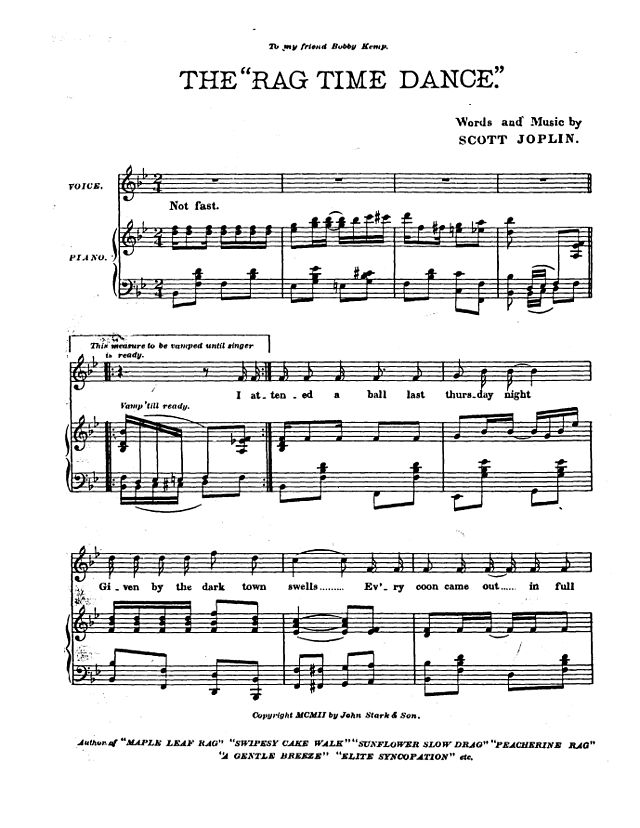
Ragtime 1
Classic ragtimeNotated or written compositions for pian, in four sections; associated with Scott Joplin and his contemporaries emerged when syncopated piano improvisations originating mainly in the United States Midwest and South were published as "rags" and made available to a mass market through inexpensive sheet music. Chief among piano ragtime's published composers are Scott Joplin, whose first rag appeared in 1899, followed by James Scott and Joseph Lamb, frequently identified as "the big three."
| The Big "Three" Composers of Ragtime | ||
|---|---|---|
 Scott Joplin (1868-1919) |
 James Scott (1885-1938) |
 Joseph Lamb (1887-1960) |
Despite their success, African American performers and composers did not necessarily embrace the term "ragtime," even as they contributed to its popularity and success. Leading composers, such as Scott Joplin and James Reese Europe (l881-1919), who made recordings with his band for the Victor Talking Machine Company, found the term and its appropriation by White Americans troubling. In his School of Ragtime (1908), a collection of piano exercises for amateur players, Joplin referred to this new syncopation phenomenon as "what is scurrilously called ragtime."
Similarly, Reese Europe, writing in the Black-owned newspaper The New York Age in 1909, noted: "In my opinion, there never was any such music as 'ragtime.' 'Ragtime' is merely a nickname, or rather a fun name given to Negro rhythm by our Caucasian brother musicians many years ago" (quoted in Berlin 1994, 197). While both Joplin and Europe proudly claimed some racial essence for their music and its powerful rhythmic effect, they resisted the term's potential to perpetuate notions of primitive Blackness, problematic caricatures, dialects, and movements related to minstrelsy and the later genres. Indeed, controversies about ragtime and its purported affront to morality as a kind of pathological social disease threatening White American culture appeared in the popular press, both musical and otherwise, well into the 1920s. Jazz then took over as the suspect popular music about which critics voiced concerns, followed by rhythm and blues and rock and roll in the 1950s.






